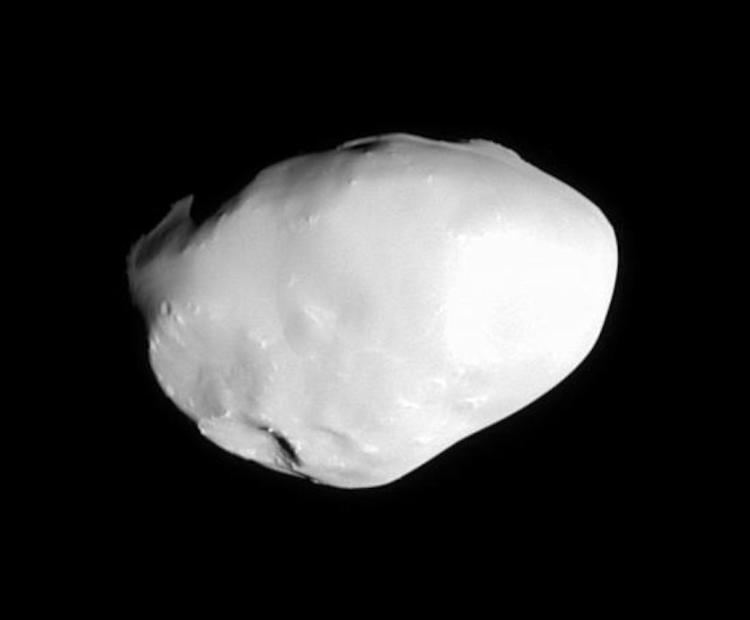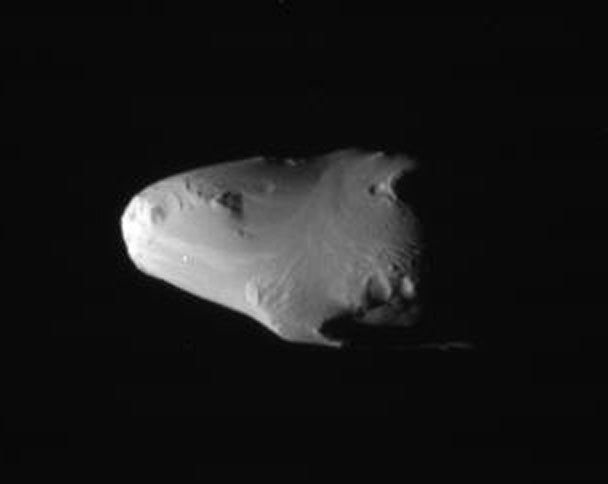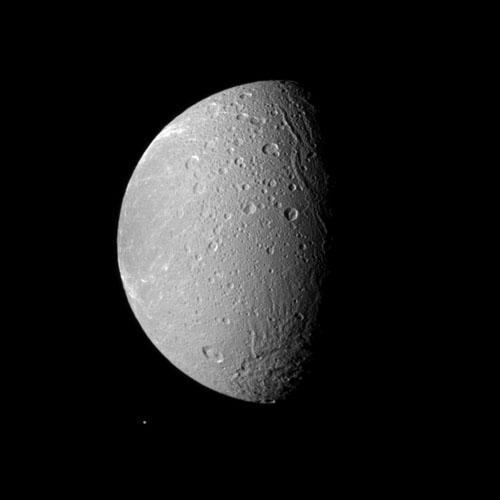Discovery date April 8, 1980 Dimensions 32.6 × 23.6 × 20.0 km Discovered 8 April 1980 Eccentricity 0.000 | Orbital period 46 hours Semimajor axis 294.619 million m | |
 | ||
Discovered by Bradford A. SmithHarold ReitsemaStephen M. LarsonJohn W. Fountain Inclination 1.19° (to Saturn's equator) Mean radius 7004124000000000000♠12.4±0.4 km Similar Saturn moons, Other celestial objects | ||
Telesto moon
Telesto (/tᵻˈlɛstoʊ/ tə-LES-toh, Greek: Τελεστώ) is a moon of Saturn. It was discovered by Smith, Reitsema, Larson and Fountain in 1980 from ground-based observations, and was provisionally designated S/1980 S 13. In the following months, several other apparitions were observed: S/1980 S 24, S/1980 S 33, and S/1981 S 1.
Contents

In 1983 it was officially named after Telesto of Greek mythology. It is also designated as Saturn XIII (13) or Tethys B.

Telesto is co-orbital with Tethys, residing in Tethys' leading Lagrangian point (L4). This relationship was first identified by Seidelmann et al. in 1981. Another moon, Calypso, resides in the other (trailing) Lagrangian point of Tethys, 60 degrees in the other direction from Tethys. The Saturnian system has two additional trojan moons.

Exploration

The Cassini probe performed a distant flyby of Telesto on October 11, 2005. The resulting images show that its surface is surprisingly smooth, devoid of small impact craters.

